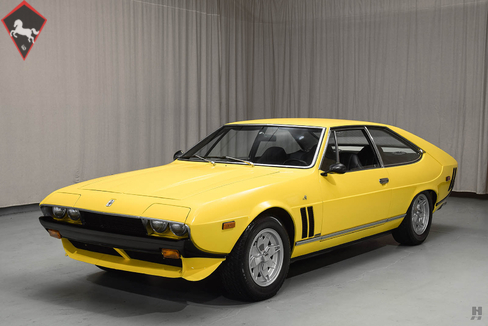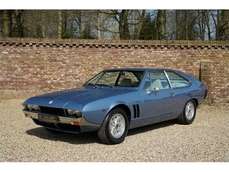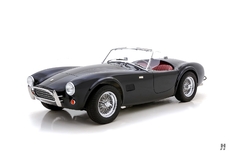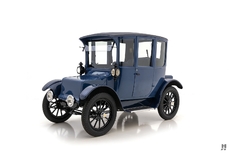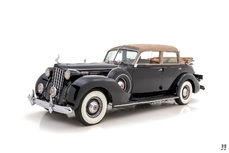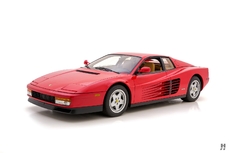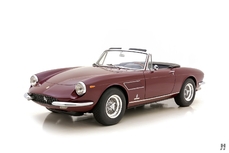Iso Lele Sport 1974
General description :
Isothermos was an Italian refrigerator manufacturer founded in Genoa Italy in 1939. It was taken over in 1942 by Renzo Rivolta, a car-crazy engineer and industrialist. Mr. Rivolta ended refrigerator production and moved the company to Bresso, Italy where they began production of high-quality motorcycles. Isomotos, as they were known, were very well-built bikes with excellent performance, and despite being rather more expensive than the competition, proved popular with the Italian public. While motorcycles were critical in getting the war-torn country back on wheels, buyers needed something more practical for year round use and runs to the shops. The solution came in the form of the Iso Isetta bubble car, a cheap, simple three (or four, depending on year and spec) wheeled micro car with a motorbike engine and room for two adults and some groceries. The Isetta was a moderate success in the home market, but it was Rivolta’s decision to sell the design rights to other companies that proved his biggest stroke of genius. Most notably, BMW produced a version of the Isetta that became one of the most popular microcars in Germany, exactly what the physically and economically devastated nation needed post-war.
Renzo Rivolta’s business acumen afforded him the cash he needed to move decidedly upmarket from the Isetta and begin production of a line of elegant and stylish GT cars. His new cars utilized Italian designed chassis and bodies built by the legendary Carrozerria of the day, but to save on development costs, he utilized cheap and reliable American V8 horsepower. The Rivolta and Grifo were powered by Corvette-spec engines from Chevrolet. After Renzo’s death in 1966, his son Piero took over operations and continued to expand upon his father’s dream by adding additional models and even making a foray into motorsport.
The Lele (named for Piero’s wife Lele Rivolta) is one of the post-Renzo Iso cars, debuting in 1969 as part of a three-car lineup that included the 2-seat Grifo, the four-door Fidia and the four-seat GT-style Lele positioned between the two. The Lele was Piero Rivolta’s answer to the Lamborghini Espada, Maserati Mexico and the Ferrari 365 2+2; a uniquely styled GT coupe which bore more than a passing resemblance to the Espada, particularly in the long and dramatic fastback roofline and slightly chunky proportions. This is hardly coincidence as both cars were styled by Bertone at about the same time. From 1969 through 1972, the Lele was powered by Chevrolet’s 327 V8 engine. From 1972 through the company’s demise in 1974, the cars utilized the big Ford 351 Cleveland which delivered a healthy boost in power from the 327. Also in ’72, Iso had teamed with Marlboro to put their branding on a Frank Williams-designed Formula 1 car. As a promotion, two stripped down Marlboro Edition cars were built for the team drivers, which subsequently spawned the production IR6 Sport. The Lele Sport featured blacked out bumpers, a chin spoiler and most notably, a Cobra Jet-spec Ford 351 tuned to a very healthy 360hp.
This wonderful, late-production 1974 Iso Lele IR6 Sport is one of just 20 such examples out of a total run of 285 Leles. This outstanding car has been treated to a full, bare-metal, engine-out respray in original Lemon Yellow paint. The quality of the restoration is excellent and is backed with an array of receipts and photographic documentation of the process. Contrasting the Lemon Yellow paint work are the black bumpers and a lower chin spoiler which are unique to the Lele Sport models. The exterior trim is in very good condition and the car rides on a set of proper and fabulously styled Campagnolo alloy wheels, also unique to the Iso Lele.
The archetypal Italian GT cabin has been restored to a very high standard and presents extremely well. The four individual bucket seats are trimmed in quality black leather and the black wool carpets appear very fresh. This example also features air conditioning, electric windows and a later Alpine AM/FM stereo, allowing 1970’s GT-Man to arrive at his destination in comfort and style.
GT-Man would also arrive to his destination early, thanks to the tuned 351 Cobra Jet V8 making a full 360 horsepower and an ocean of torque. As part of the engine-out restoration, the big American V8 was detailed with proper valve covers, a correct air cleaner and proper finishes and fittings. A Pro-Comp electronic ignition system was added for additional reliability, fine tuning and smooth performance. The V8 is mated to a Ford automatic transmission, which further enhances the relaxed high-speed, continent crushing ability of this Lele Sport. This example runs extremely well and is a real thrill to press on, with a great thumping soundtrack and excellent road manners. We love the Lele’s unique style, as well as its incredible performance. With just 20 such examples of the Sport produced, it is sure to be a hit on the road or on the show field.
http://hymanltd.com/vehicles/5814-1974-iso-lele-sport/
1974 Iso Lele Sport is listed sold on ClassicDigest in St. Louis by Mark Hyman for $98500.
Car Facts
Car type : Car Make : Iso Model : Lele Model Version : Sport Engine size : 0.0 Model Year : 1974 Location : Missouri
Sold
Seller Information
Sold
People who viewed this Iso Lele also viewed similar Iso listed at ClassicDigest
Other cars listed for sale by this dealer
About Iso
The story of Iso, the stylish Italian GT with good old American grunt, is a tale of innovation and passion that left a lasting mark on the automotive world. It all began in the early 1950s when Renzo Rivolta, an Italian engineer and entrepreneur, decided to enter the car manufacturing business. His vision was to create a GT car that would combine Italian elegance and American power.In 1953, Iso Rivolta was founded, and the company's first foray into the automotive world was the Isetta, a small and quirky microcar. While the Isetta gained some popularity, it was the Iso Rivolta GT, introduced in 1962, that truly set the stage for the company's legacy. This luxurious and sporty GT car featured a body designed by Giorgetto Giugiaro and was powered by a 327-cubic-inch Chevrolet V8 engine. It was a perfect fusion of Italian styling and American muscle.
The Iso Rivolta GT was followed by the Iso Grifo in 1965, another high-performance GT car that utilized American V8 power, this time sourced from Ford and Chevrolet. The Grifo, designed by Bertone, was not only powerful but also exquisitely styled, making it a rival to the likes of Ferrari. Many enthusiasts and critics believed that the Iso Grifo offered a more comfortable and practical alternative to the sometimes temperamental Italian supercars.
Iso continued to expand its lineup with models like the Iso Lele, which was a more refined, luxurious GT car, and the Iso Fidia, a four-door sedan, both powered by V8 engines. The Iso brand was known for its attention to detail and high-quality craftsmanship, which set it apart from some of its competitors.
One of the most iconic cars produced by Iso was the Iso Grifo 7 Litri. As the name suggests, it was equipped with a massive 7-liter V8 engine, delivering astonishing performance. With its sleek, aggressive design and brute force, the Grifo 7 Litri became a symbol of the company's ability to combine elegance and power in a single package.
However, despite the critical acclaim and a loyal fanbase, Iso struggled financially, and the 1973 oil crisis had a significant impact on the company's fortunes. In 1974, Iso ceased production, marking the end of an era. The company's legacy lives on in the hearts of enthusiasts who appreciate the unique blend of Italian style and American muscle that Iso cars embodied.
Today, classic Iso cars are highly sought after by collectors, and their unique combination of attributes continues to captivate automotive enthusiasts. The Iso brand may have disappeared, but its influence on the world of grand touring cars remains, as some people still prefer them to Ferraris for their distinctive character and charm.
